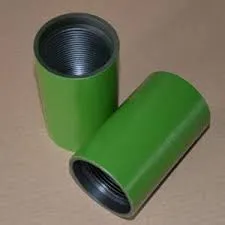- Afrikaans
- Albanian
- Amharic
- Arabic
- Armenian
- Azerbaijani
- Basque
- Belarusian
- Bengali
- Bosnian
- Bulgarian
- Catalan
- Cebuano
- Corsican
- Croatian
- Czech
- Danish
- Dutch
- English
- Esperanto
- Estonian
- Finnish
- French
- Frisian
- Galician
- Georgian
- German
- Greek
- Gujarati
- Haitian Creole
- hausa
- hawaiian
- Hebrew
- Hindi
- Miao
- Hungarian
- Icelandic
- igbo
- Indonesian
- irish
- Italian
- Japanese
- Javanese
- Kannada
- kazakh
- Khmer
- Rwandese
- Korean
- Kurdish
- Kyrgyz
- Lao
- Latin
- Latvian
- Lithuanian
- Luxembourgish
- Macedonian
- Malgashi
- Malay
- Malayalam
- Maltese
- Maori
- Marathi
- Mongolian
- Myanmar
- Nepali
- Norwegian
- Norwegian
- Occitan
- Pashto
- Persian
- Polish
- Portuguese
- Punjabi
- Romanian
- Russian
- Samoan
- Scottish Gaelic
- Serbian
- Sesotho
- Shona
- Sindhi
- Sinhala
- Slovak
- Slovenian
- Somali
- Spanish
- Sundanese
- Swahili
- Swedish
- Tagalog
- Tajik
- Tamil
- Tatar
- Telugu
- Thai
- Turkish
- Turkmen
- Ukrainian
- Urdu
- Uighur
- Uzbek
- Vietnamese
- Welsh
- Bantu
- Yiddish
- Yoruba
- Zulu
Understanding Bull Plug Pressure Ratings for Enhanced Safety and Performance in Industrial Applications
Understanding Bull Plug Pressure Ratings A Key Consideration in Industrial Applications
In various industrial applications, especially in oil, gas, and chemical manufacturing, the need for reliable pressure containment is paramount. One critical component that plays a significant role in ensuring this reliability is the bull plug. A bull plug, often referred to as a blind plug, is used to seal off openings in pipelines, vessels, or equipment, preventing leaks and maintaining pressure integrity. The effectiveness of a bull plug largely depends on its pressure rating, which indicates the maximum pressure that the plug can safely withstand without failure.
What is Pressure Rating?
Pressure rating refers to the maximum pressure that a component can handle safely. In the case of bull plugs, this rating ensures that they can effectively seal against the internal pressure of the fluid or gas they are containing. Pressure ratings are critical in preventing failures that could lead to leaks, equipment damage, or catastrophic accidents. Each bull plug is manufactured according to specific industry standards, such as ASME, ASTM, or API, which provide guidelines for material selection, design, and testing.
Factors Influencing Bull Plug Pressure Ratings
Several factors influence the pressure rating of a bull plug
1. Material Composition Bull plugs can be made from a variety of materials, including stainless steel, carbon steel, and plastic. The material's properties, such as tensile strength and corrosion resistance, directly affect the pressure rating. For instance, stainless steel bull plugs are often used in applications involving corrosive substances due to their durability and resistance to degradation.
bull plug pressure rating

2. Size and Design The dimensions and design of the bull plug also play a crucial role in its pressure rating. Larger plugs may have lower pressure ratings due to increased surface area, while smaller or specially designed plugs may withstand higher pressures. Engineers must carefully consider the application requirements when selecting the appropriate size and design.
3. Temperature Conditions The operating temperature can affect material properties, thus influencing the pressure rating. Many materials used in bull plugs experience changes in strength at elevated temperatures. Therefore, understanding the operating environment is essential for ensuring the plug can perform safely under varying conditions.
4. Manufacturing Standards and Testing Bull plugs must be manufactured following established industry standards, which often include rigorous testing for pressure containment. Compliance with these standards is essential for ensuring the reliability and safety of the plugs in real-world applications.
Applications of Bull Plugs
Bull plugs are commonly used in a wide array of applications, including pipeline systems, pressure vessels, and equipment maintenance. Industries such as oil and gas often utilize bull plugs to safely close off lines during maintenance or to protect systems from pressure surges. In chemical processing, bull plugs are essential for maintaining safe operational pressures in reactors and storage tanks, where any leakage could result in hazardous situations.
Conclusion
In conclusion, understanding the pressure rating of bull plugs is essential for engineers and safety professionals involved in industrial operations. The pressure rating not only indicates the safe operating limits of the plugs but also plays a critical role in overall system safety and efficiency. By considering factors such as material composition, design, temperature conditions, and adherence to manufacturing standards, industries can ensure they select the right bull plugs for their specific applications, thereby safeguarding against potential risks associated with pressure containment.
-
Tubing Pup Joints: Essential Components for Oil and Gas OperationsNewsJul.10,2025
-
Pup Joints: Essential Components for Reliable Drilling OperationsNewsJul.10,2025
-
Pipe Couplings: Connecting Your World EfficientlyNewsJul.10,2025
-
Mastering Oilfield Operations with Quality Tubing and CasingNewsJul.10,2025
-
High-Quality Casing Couplings for Every NeedNewsJul.10,2025
-
Boost Your Drilling Efficiency with Premium Crossover Tools & Seating NipplesNewsJul.10,2025







